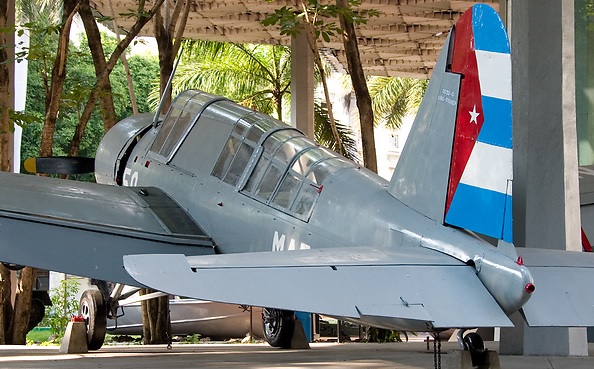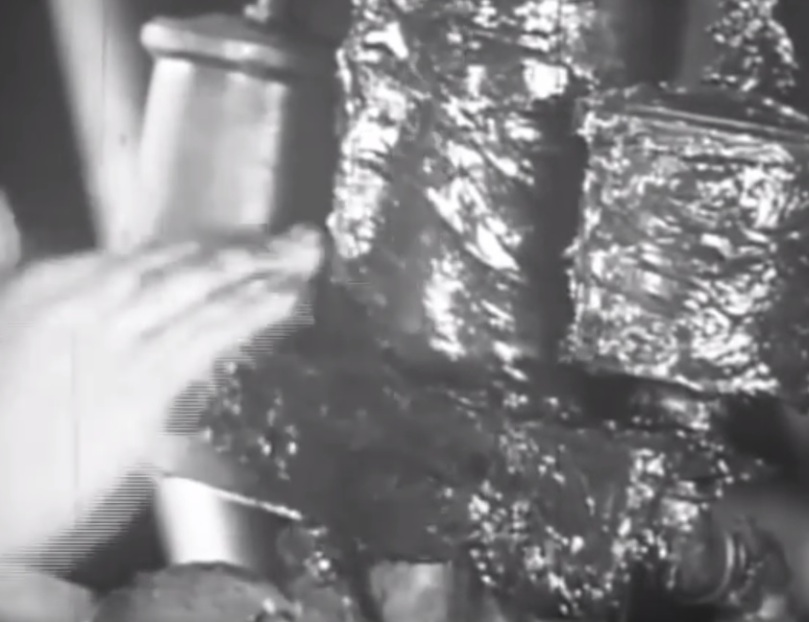(part 2 of a 2-part series)

(Cuban Revolutionary Navy OS2U Kingfisher.)
(part 2 of a 2-part series)

(The 1945 decommissioning ceremony of USS Tunny (SS-282), showing the blown plastic preservation technique on the deck gun.) (official US Navy photo)

(Protective grease is applied to machinery on a mothballed warship, in a still from a post-WWII training video.)

(Mothballed WWII destroyers at Charleston, SC in the 1950s, with their radars removed and AA guns enclosed in igloos.)
Forever associated with the WWII Wehrmacht, the stahlhelm (literally, ‘steel helmet’) enjoyed surprisingly long use in Latin America after WWII, up until the present time.

(Bolivian soldiers with stahlhelm M35 helmets and M16 assault rifles.)

(Chilean soldiers in 2009 wearing the stahlhelm M35.)

(Late 1950s Dominican Republic soldiers with stahlhelm M53 helmets, NATO-standard FN FAL assault rifles, and American M1936 belts from WWII Lend-Lease.)
Great Britain’s Lanchester submachine gun was a WWII firearm largely irrelevant to the outcome of the war, but which had a surprisingly long career afterwards.
 The Lanchester (named after it’s designer, George Lanchester of Sterling Armaments Company) came about as a “crash” program in 1940. After the Dunkirk evacuation but before Lend-Lease deliveries picked up, the British military was critically short of small arms including submachine guns. At the same time, the Royal Air Force was concerned that, if Germany were to proceed with an invasion of England, that it’s airfields might come under ground attack. The Royal Navy was also looking for a new submachine gun to equip watchstanders and boarding parties.
The Lanchester (named after it’s designer, George Lanchester of Sterling Armaments Company) came about as a “crash” program in 1940. After the Dunkirk evacuation but before Lend-Lease deliveries picked up, the British military was critically short of small arms including submachine guns. At the same time, the Royal Air Force was concerned that, if Germany were to proceed with an invasion of England, that it’s airfields might come under ground attack. The Royal Navy was also looking for a new submachine gun to equip watchstanders and boarding parties.
 (A boatswain of the Royal Australian Navy with a Lanchester during WWII.)
(A boatswain of the Royal Australian Navy with a Lanchester during WWII.)